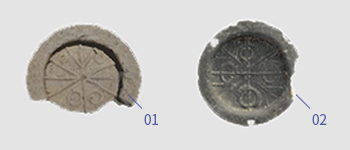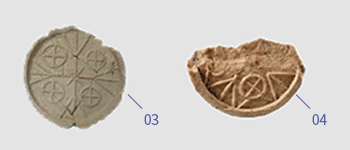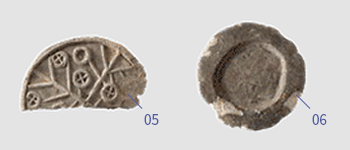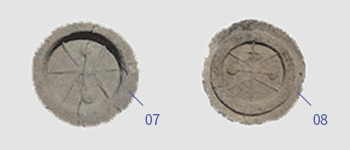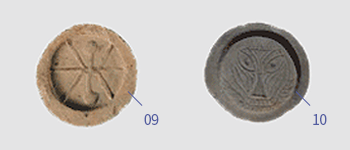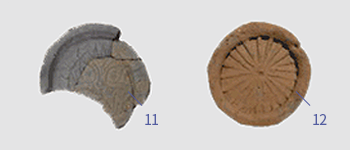Iron makes for a strong country
– Seven-branched sword
The Baekje produced diverse ironware based on their excellent iron-making techniques. In particular, the used a high-level inlay technique, making seven-branched swords and presented it to the king of Japan. They also produced large ringed sword, and various ornaments. The length of the seven-branched sword measures 74.9cm, and that of the blade, excluding the part connecting to the handle, measures 66.5cm. The seven-branched sword has 3 branches on either side of the central blade.
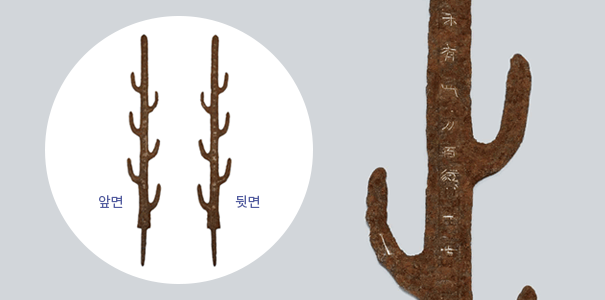
-
Front
side 泰△四年五月十六日丙午正陽造百練銕七支刀出(生)辟百兵宜供供侯王△△△△祥(作) May 16 of the 4th year of Tae△ was Byeongo, I made a seven-branched sword of iron, which was tempered a hundred times, on the day of. As this sword can defeat all kinds of enemies, it is fit for the king of the allied countries. It was made by △△△△ -
Rear
side 先世以來未有此刀百濟王世子奇生聖音故爲倭王旨造傳示後世 There was no such sword like this, and since I made the sword for Ji, the king of Japan as Gi, the crown prince of the Baekje, made a holy sound, hand it down to posterity
The roof is decorated
with flowers and animals
– Convex tiles
The roof tiles consist of a construction material covering the roofs of homes. The roof tiles of the Baekje’s Hanseong period includes female and male tiles, and convex tiles. Most of the male tiles of the Hanseong period do not have any particular pattern, however, the female tiles have grid and line patterns. For the convex tiles, diverse patterns are engraved such as flowering plants, branches, coins, circles, diamonds and lotus flowers, and there also are tiles without any patterns. From the Ungjin period when Buddhism began to be prosperous, most of the convex tiles had a lotus flower pattern, and during the Sabi period, some of them had a pinwheel pattern.
- 01 ~ 05Coin pattern
- 06Solid
- 07~09Flower pattern
- 10~11Spotted animal pattern
- 12Wheel pattern
There lived a king – Mongchontoseong, Pungnaptoseong
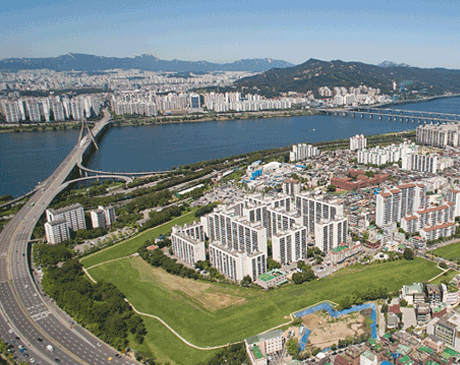 Pungnaptoseong
Pungnaptoseong
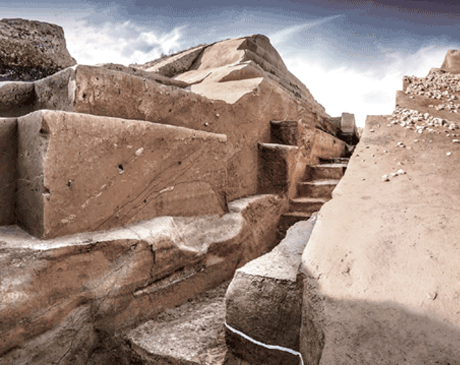 Cut slope of
Cut slope ofthe eastern rampart,
Pungnaptoseong
Pungnaptoseong
Pungnaptoseong was designated as a national historic site in 1963. It was once a large-scale fortress with a circumference of 3.5km, however, approximately 2.2km of it remains today. The fortress was an important facility in ancient society for preventing the invasion of a massive external force. Therefore, they used the best engineering technology of the time to build a fortress, which was rather sturdy and was easy to defend. In this place, we have identified diverse materials, which resemble a part of the facilities of the Baekje’s palace, such as roads, large building sites, housing sites and drains.
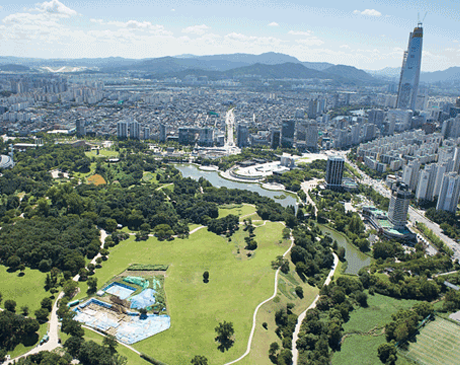 Mongchontoseong
Mongchontoseong
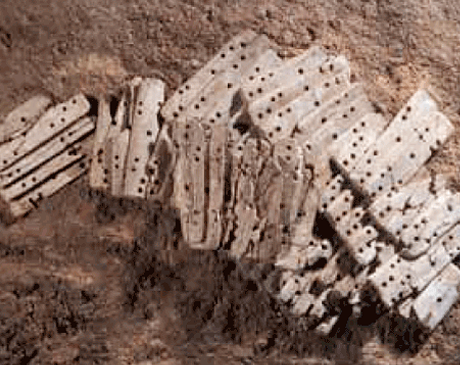 Bone armor
Bone armor (Mongchontoseong)
Mongchontoseong
Mongchontoseong is an earthen rampart built on a natural hill located at the end of the Namhansanseong Fortress with an altitude of 45m above sea level. The entire circumference of it measures 2.3km while forming a diamond shape which runs 730m north and south, and 570m east and west. There is a small protruding rampart at the east-western side, and at the outer rampart, there is a moat that was formed by using the natural river flowing at the foot of the hill. In addition, we have identified a ground building site, construction site, dugout hut site, storage pit, pond site and wooden fences.
Tombs, the place to live on forever – Tombs of Seokchon-dong and Bangi-dong
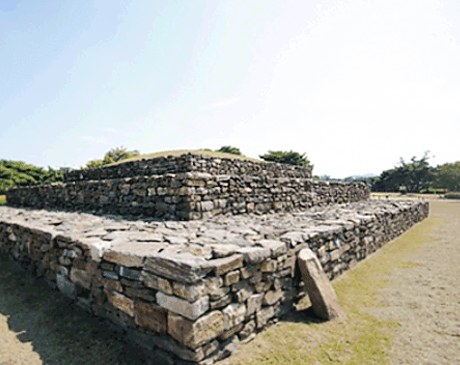 Tombs of
Tombs of Seokchon-dong
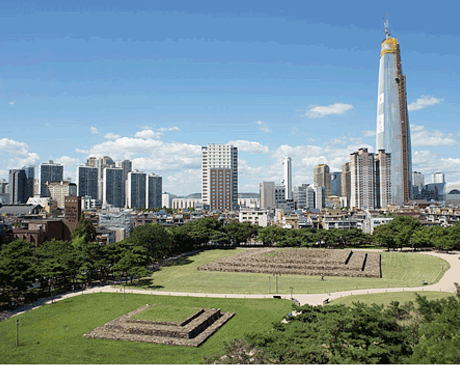 Tombs of
Tombs of Seokchon-dong
Tombs of Seokchon-dong
When viewing the tombs of Seokchon-dong, it is easy to see how the structure and type of the tombs in the early stage of the Baekje are much more diverse and complex than we thought. The 3rd tomb of Seokchon-dong was a terraced stone mound tomb that measured an estimated 50.8m from east to west, and 48.4m from north to south. It was built by piling up the trimmed stones, which were collected in the mountains, in three terraced stories at least, however, it is difficult to learn about the original shape of it above a height of 4.5m as the upper part was destroyed due to urban development since modern times.
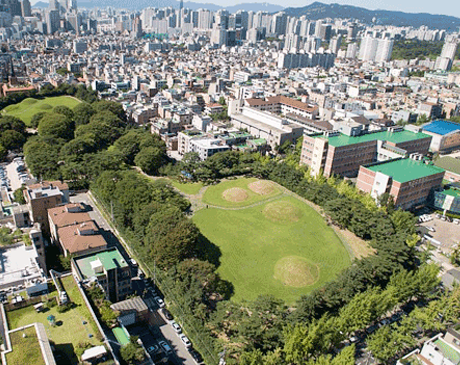 Tombs of
Tombs of Bangi-dong
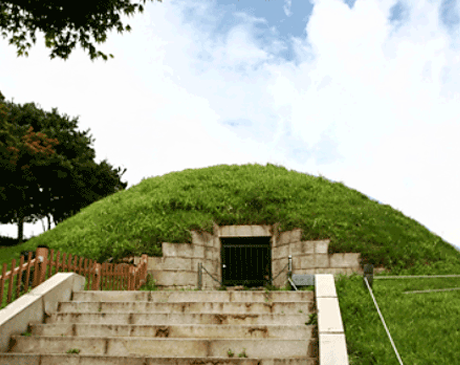 Tombs of
Tombs of Bangi-dong
Tombs of Bangi-dong
These are the tombs of the early Baekje Kingdom (the beginning of the 4th century – 475), which are located across the whole area of Bangi-dong, and they present the culture of the Hanseong Baekje. The 1st one is a cave-type chamber tomb (Horizontal stone chamber tomb) with a mound that is 12m wide and 2.2m high, and it is also equipped with a flue duct and a rectangular state room. In the grayish blue hard-type plate excavated from the 6th tomb, the holes of the heel were found out to be the same as that of typical Shilla pottery. It shows that the tomb might be one of the Shilla’s which was built when the Hangang River basin was a territory of the Shilla after the 6th century.
Source : SEOUL BAEKJE MUSEUM

